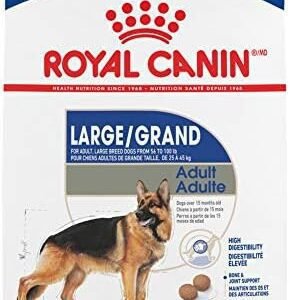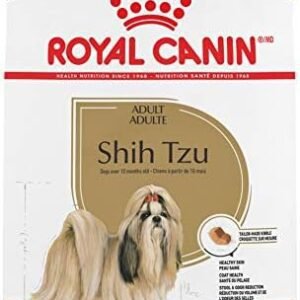In the realm of canine healthcare, Mitotane emerges as a significant medication with a profound impact on our furry companions’ lives. This article aims to provide a comprehensive resource for pet owners and veterinarians, offering in-depth insights into Mitotane, its uses, benefits, dosage guidelines, potential side effects, and more.
Table of Contents
Unveiling Mitotane
Mitotane, known by its trade name Lysodren, is a medication that has become indispensable in the field of veterinary medicine. Its importance lies in its remarkable ability to address specific health conditions in dogs, improving their quality of life and providing much-needed relief. As we delve into the details of Mitotane’s uses and implications, let’s begin with an overview of this vital canine medication.
A Table of Essential Information
Before we venture further into the world of Mitotane, let’s establish a foundation by summarizing key details about this medication. This table serves as a quick reference, ensuring that veterinarians and pet owners can easily access essential information.
| Common Names | Mitotane (Trade Name: Lysodren) |
|---|---|
| Drug Type | Medication |
| Used For | Management of Hyperadrenocorticism (Cushing’s Disease) in Dogs |
| Administered | Tablets or Oral Liquid |
| FDA Approved | Yes |
II. Understanding Mitotane
In the realm of canine healthcare, understanding the medications that play a pivotal role in the well-being of our beloved pets is essential. In this section, we embark on a journey to comprehend Mitotane—what it is, how it operates within a dog’s body, and the common conditions and ailments it can effectively manage.
What is Mitotane?
Mitotane, commonly recognized by its trade name Lysodren, is a potent medication used in veterinary medicine to address a specific and often challenging health condition in dogs. It belongs to a class of medications known as adrenocortical suppressants. Mitotane is particularly renowned for its effectiveness in managing hyperadrenocorticism, which is commonly referred to as Cushing’s disease in dogs.
Cushing’s disease is a complex endocrine disorder that primarily affects the adrenal glands. These glands are responsible for producing hormones that play a crucial role in regulating various bodily functions. When Cushing’s disease occurs, the adrenal glands become overactive and produce excessive cortisol, a steroid hormone. This hormonal imbalance can lead to a range of distressing symptoms and complications in affected dogs.
Mitotane, as an adrenocortical suppressant, targets the adrenal glands and serves to regulate the excessive production of cortisol. By doing so, it helps mitigate the symptoms and improve the overall well-being of dogs suffering from Cushing’s disease.
How Does Mitotane Work in Dogs’ Bodies?
Mitotane exerts its effects by specifically targeting and damaging the cells within the adrenal glands responsible for producing excess cortisol. This damage to the adrenal cortex results in a reduced production of cortisol, ultimately bringing the hormonal imbalance under control. By effectively normalizing cortisol levels, Mitotane alleviates the clinical signs and symptoms associated with Cushing’s disease.
However, it’s crucial to emphasize that Mitotane’s mechanism of action is not immediate. The reduction of cortisol production is a gradual process that may require weeks or even months to achieve the desired effect. This delayed onset of action necessitates careful monitoring and ongoing veterinary supervision during the treatment process.
Common Conditions and Ailments in Dogs that Mitotane Can Treat or Manage
Mitotane’s primary and most prominent application in canine healthcare is for the management of hyperadrenocorticism, or Cushing’s disease. This condition is characterized by the overproduction of cortisol, which can lead to a variety of distressing symptoms in affected dogs, including:
- Excessive thirst and urination
- Increased appetite
- Muscle weakness
- Panting and restlessness
- Pot-bellied appearance
- Skin issues, such as hair loss and thinning
- Susceptibility to infections
- Development of diabetes
Mitotane effectively addresses these symptoms by regulating cortisol production, alleviating discomfort, and improving the quality of life for dogs with Cushing’s disease.
It’s important to note that Mitotane is primarily indicated for this specific condition. While it can offer significant benefits to dogs with Cushing’s disease, its use in addressing other health issues is limited. The decision to prescribe Mitotane and the determination of the correct dosage should always be made by a qualified veterinarian based on the specific diagnosis and condition of the dog.
III. Benefits of Mitotane for Dogs
Effectiveness in Treating Specific Canine Health Issues
Mitotane, known for its effectiveness in addressing Cushing’s disease (hyperadrenocorticism) in dogs, offers a ray of hope to both pet owners and their four-legged friends. Let’s delve into how Mitotane proves to be a game-changer in managing this challenging condition.
Cushing’s Disease Management
Mitotane is considered the gold standard in the treatment of Cushing’s disease. The effectiveness of this medication lies in its ability to regulate and reduce the excessive production of cortisol, a hormone that wreaks havoc on a dog’s health when overproduced.
Cushing’s disease can manifest in a multitude of distressing symptoms, from increased thirst and urination to muscle weakness and skin problems. Without effective management, the condition can severely compromise a dog’s quality of life. This is where Mitotane steps in.
By targeting and damaging the cells in the adrenal cortex responsible for overproducing cortisol, Mitotane gradually restores hormonal balance. This not only alleviates the symptoms of Cushing’s disease but also prevents further complications. As a result, dogs experience a significant improvement in their overall well-being.
How Mitotane Can Improve Dogs’ Quality of Life
The benefits of Mitotane extend beyond its effectiveness in treating Cushing’s disease. Understanding how it can enhance a dog’s quality of life is instrumental for pet owners facing the challenges of this condition.
Symptom Alleviation
One of the most profound ways in which Mitotane enhances a dog’s quality of life is by alleviating the distressing symptoms associated with Cushing’s disease. Excessive thirst and urination, increased appetite, muscle weakness, skin issues, and a pot-bellied appearance are common signs that diminish a dog’s comfort and happiness. With Mitotane, these symptoms are significantly reduced or even resolved, providing much-needed relief.
Prevention of Complications
Cushing’s disease, if left unmanaged, can lead to severe complications such as diabetes, infections, and a decreased lifespan. By effectively controlling the condition, Mitotane plays a pivotal role in preventing these complications. Dogs under Mitotane treatment are less susceptible to secondary health issues, allowing them to lead a healthier and more fulfilling life.
Enhanced Activity and Vitality
Before the administration of Mitotane, dogs with Cushing’s disease often exhibit lethargy and reduced activity levels. As Mitotane gradually restores hormonal balance, dogs experience a renewed vitality and energy. They become more active, engaged, and enjoy a better quality of life, which is heartening for both pet owners and their pets.
Long-Term Well-Being
Mitotane treatment aims at providing a sustained improvement in a dog’s health and quality of life. This isn’t merely about short-term relief but rather ensuring that dogs enjoy long-term well-being. With consistent administration and regular veterinary monitoring, dogs with Cushing’s disease can experience a fulfilling and extended life.
It’s important to note that while Mitotane offers substantial benefits in managing Cushing’s disease, it is not without considerations and potential side effects. As we progress through this article, we will delve into crucial details about the administration of Mitotane, the importance of adhering to prescribed dosages, potential side effects, and the necessity of consulting a veterinarian for professional guidance.
By understanding the profound benefits that Mitotane can bring to dogs facing the challenges of Cushing’s disease, pet owners can make informed decisions about their canine companions’ healthcare. In the subsequent sections, we will explore the intricacies of administering Mitotane, the potential side effects to be vigilant about, and the critical role of professional veterinary consultation in ensuring the well-being of our furry friends.
IV. Administering Mitotane to Dogs
Administering Mitotane to dogs requires precision and adherence to dosage guidelines.
Dosage Guidelines: Determining the Right Dosage
The correct dosage of Mitotane for a dog is a critical factor in ensuring the medication’s effectiveness and safety. This dosage is determined by your veterinarian and is influenced by several key factors, including:
Mitotane Dosage Chart for Dogs by Weight
Mitotane (Lysodren) is used to treat Cushing’s disease and adrenal gland carcinoma in dogs. The dosage is typically based on the dog’s weight rather than height. Here is a general dosage guide:
Loading Dose
- Initial Dose: 40-50 mg per kg of body weight per day, given with food in divided doses.
Maintenance Dose
- Standard Dose: 25-50 mg per kg of body weight per week, given with food in divided doses.
Dosage Chart of mitotane for dogs
| Dog’s Weight | Loading Dose (daily) | Maintenance Dose (weekly) |
|---|---|---|
| 10 lbs (4.5 kg) | 180-225 mg | 112.5-225 mg |
| 20 lbs (9 kg) | 360-450 mg | 225-450 mg |
| 30 lbs (13.5 kg) | 540-675 mg | 337.5-675 mg |
| 40 lbs (18 kg) | 720-900 mg | 450-900 mg |
| 50 lbs (22.5 kg) | 900-1125 mg | 562.5-1125 mg |
Important Considerations
- Monitoring: Regular ACTH stimulation tests are necessary to adjust the dosage and ensure effectiveness.
- Side Effects: Watch for signs of decreased appetite, vomiting, diarrhea, or lethargy.
- Veterinary Guidance: Always follow your veterinarian’s specific instructions and adjust the dosage based on their recommendations.
2. Severity of Cushing’s Disease
The severity of Cushing’s disease in your dog is another significant determinant of the dosage. Dogs with advanced Cushing’s disease may require a higher initial dosage to initiate cortisol reduction, while those with milder cases may begin with a lower dose.
3. Response to Treatment
Mitotane’s dosage may need adjustments based on how your dog responds to treatment. Regular veterinary monitoring is crucial to assess your dog’s progress, and dosage may be altered as needed to maintain cortisol levels within the desired range.
It’s important to note that Mitotane is typically administered in two phases:
- Induction Phase: This phase involves the initial administration of a higher dosage to rapidly reduce cortisol production. Dogs in this phase may experience side effects, and close monitoring is essential.
- Maintenance Phase: Once cortisol levels are under control, the dosage is typically reduced to a maintenance level. This phaseaims to provide the benefits of Mitotane while minimizing side effects.
Always follow your veterinarian’s guidance regarding the appropriate dosage for your dog. Attempting to adjust the dosage without professional oversight can lead to complications.
Frequency of Administration: Daily, Weekly, or As Needed
The frequency of Mitotane administration can vary, and your veterinarian will establish a suitable schedule based on your dog’s response to treatment and their specific needs. There are three primary approaches to administering Mitotane:
1. Daily Administration
For dogs requiring more rapid cortisol reduction, daily administration is often employed during the induction phase. Daily doses can help expedite the therapeutic effects of Mitotane and bring the condition under control more quickly.
2. Intermittent or Weekly Administration
Some dogs may respond well to intermittent or weekly Mitotane administration, especially during the maintenance phase. This approach offers the benefit of fewer side effects while maintaining cortisol levels within the desired range.
3. As Needed
In certain cases, Mitotane may be administered on an as-needed basis. This approach is typically reserved for dogs with mild cases of Cushing’s disease and those who may not tolerate daily or weekly administration.
The frequency of Mitotane administration should always be determined by your veterinarian based on your dog’s unique requirements and their response to treatment.
Directions for Use: Tips for Administering Mitotane to Dogs
Administering Mitotane to your dog requires careful attention and precision. Here are some tips to ensure a smooth and effective administration:
1. Follow Veterinary Instructions
Always adhere to the specific instructions provided by your veterinarian. This includes the dosage, frequency of administration, and any additional guidelines tailored to your dog’s condition.
2. Administer with Food
Mitotane is generally administered with food to enhance its absorption and minimize potential gastrointestinal upset. Mixing it with a small amount of your dog’s meal or hiding it in a treat can make the process more palatable for your pet.
3. Monitoring for Side Effects
During the induction phase, closely monitor your dogfor potential side effects. Common side effects include vomiting, diarrhea, lethargy, and a loss of appetite. If these side effects are severe or persist, consult your veterinarian promptly.
4. Consistent Timing
Administer Mitotane at consistent times each day to maintain a steady concentration in your dog’s system. This consistency is essential to achieving and maintaining the desired therapeutic effects.
5. Do Not Skip Doses
Adherence to prescribed dosages is paramount. Skipping doses or making significant changes to the administration schedule can disrupt treatment and compromise its effectiveness.
Importance of Adhering to Prescribed Dosages: Missed Dose Guideline
Adhering to prescribed dosages is not only important but also a safety imperative when administering Mitotane to dogs. It ensures that your pet receives the appropriate level of medication needed to manage Cushing’s disease effectively. Skipping or significantly altering doses can lead to:
- Inadequate control of cortisol levels, allowing Cushing’s disease to progress.
- Increased risk of side effects during the induction phase.
- Compromised therapeutic outcomes.
If you miss a dose, follow these general guidelines:
- Take the Missed Dose: Administer the missed dose as soon as you remember, unless it’s close to the time for the next scheduled dose. In that case, skip the missed dose.
- Do Not Double Dose: Do not administer a double dose to compensate for a missed one.
V. Potential Side Effects and Precautions
Common Side Effects of Mitotane in Dogs
Mitotane is a potent medication with the primary goal of reducing cortisol production in dogs with Cushing’s disease. While it can be highly effective, it may also result in various side effects. Recognizing these common side effects is crucial to ensure your dog’s well-being during treatment. Common side effects may include:
1. Gastrointestinal Upset
Many dogs experience mild gastrointestinal upset when taking Mitotane. This can manifest as vomiting, diarrhea, or a temporary loss of appetite. These symptoms are often observed during the induction phase of treatment when higher doses are administered.
2. Lethargy
Some dogs may exhibit lethargy or a decrease in energy levels. This is typically a temporary side effect and may be more pronounced during the induction phase.
3. Weakness
Muscle weakness is another potential side effect. Your dog may appear less steady on their feet or may struggle to perform physical activities they once managed with ease.
4. Loss of Appetite
Mitotane treatment can lead to a reduced appetite in some dogs. This can be particularly concerning, as adequate nutrition is vital for your dog’s overall health.
5. Increased Thirst and Urination
While Cushing’s disease can cause increased thirst and urination, these symptoms may persist or intensify during the early stages of Mitotane treatment.
6. Skin and Coat Changes
Some dogs may experience skin and coat changes, such as hair thinning or changes in skin texture. These issues are often related to the hormonal fluctuations caused by the medication.
It’s essential to understand that not all dogs will experience these side effects, and the severity of these symptoms can vary. Additionally, many of these side effects tend to be more pronounced during the induction phase when higher initial doses are administered.
If your dog does experience any of these side effects, it’s essential to communicate with your veterinarian. They can offer guidance on managing these symptoms and determine if any adjustments to the medication or dosage are necessary.
Identifying Severe or Adverse Reactions
While many dogs tolerate Mitotane well, there is the potential for severe or adverse reactions, which necessitate immediate attention. It’s crucial to be vigilant for signs of adverse reactions, which may include:
1. Severe Gastrointestinal Distress
Severe vomiting or diarrhea that doesn’t subside or leads to dehydration is cause for concern.
2. Collapse or Fainting
If your dog collapses or faints, it is a serious and alarming symptom.
3. Jaundice
Yellowing of the skin, eyes, or gums can indicate liver issues and should be reported to your veterinarianimmediately.
4. Excessive Bleeding or Bruising
Unexplained bleeding or bruising can be a sign of blood clotting problems and requires immediate attention.
5. Neurological Symptoms
Seizures, disorientation, or unusual neurological symptoms are concerning and should be addressed promptly.
If you observe any of these severe reactions in your dog, contact your veterinarian without delay. Rapid medical intervention is crucial to address the issue and ensure your dog’s well-being.
Precautions for Pregnant or Lactating Dogs
Mitotane should not be used in pregnant or lactating dogs. The medication’s potential effects on fetal development or the transfer of the drug into the mother’s milk can pose risks to both the mother and her offspring. If your dog is pregnant, may become pregnant, or is currently lactating, it’s essential to discuss alternative treatment options with your veterinarian.
Interactions with Other Medications or Supplements
Mitotane has the potential to interact with other medications or supplements your dog may be taking. To ensure your dog’s safety and the effectiveness of their treatment, inform your veterinarian of all medications and supplements your dog is currently receiving. Your veterinarian can evaluate potential interactions and make necessary adjustments to your dog’s treatment plan.
VI. Consultation with a Veterinarian
Emphasizing the Importance of Professional Guidance
Managing Cushing’s disease in dogs with Mitotane is a complex process that requires expert oversight. Veterinarians play a pivotal role in assessing your dog’s condition, determining the most suitable treatment plan, and monitoring your pet’s progress. Here’s why professional guidance is paramount:
Accurate Diagnosis
Veterinarians are equipped with the knowledge and tools to accurately diagnose Cushing’s disease in dogs. Proper diagnosis is the first step toward effective treatment.
Tailored Treatment Plans
Your veterinarian will assess your dog’s unique needs and tailor a treatment plan that includes the appropriate Mitotane dosage and administration schedule.
Monitoring Progress
Regular check-ups and monitoring of your dog’s condition are essential. Veterinarians can assess the response to treatment, make necessary dosage adjustments, and address any concerns.
Management of Side Effects
In the event that your dog experiences side effects, your veterinarian can provide guidance on managing these symptoms and ensure your pet’s comfort.
Rapid Response to Adverse Reactions
Veterinarians are trained to recognize and address adverse reactions promptly. In the case of severe symptoms, immediate medical intervention is crucial.
Overdose Information and Possible Toxicity/Effect
Mitotane has a narrow therapeutic window, meaning that the difference between a therapeutic dose and a toxic dose is relatively small. This underscores the importance of adhering to prescribed dosages and seeking professional guidance. Overdosing on Mitotane can lead to severe adverse effects, including:
1. Gastrointestinal Distress
An overdose of Mitotane may cause severe and persistent gastrointestinal distress, including severe vomiting and diarrhea.
2. Neurological Symptoms
In some cases, overdose may lead to neurological symptoms, such as seizures or disorientation.
3. Liver and Kidney Damage
Prolonged exposure to excessive Mitotane can cause damage to the liver and kidneys, which are vital organs for your dog’s overall health.
4. Cardiovascular Issues
Cardiovascular effects, such as abnormal heart rhythms, may occur in cases of Mitotane overdose.
If you suspect that your dog has ingested an excessive amount of Mitotane, contact your veterinarian immediately or seek emergency veterinary care. Quick action can make a significant difference in managing the situation effectively.
Signs or Symptoms When to Call the Vet
It’s essential for pet owners to be vigilant for signs or symptoms that indicate a need to consult their veterinarian during Mitotane treatment. If you observe any of the following, do not hesitate to contact your veterinarian:
1. Severe Gastrointestinal Distress
Persistent vomiting, diarrhea, or dehydration should prompt a call to the vet.
2. Neurological Symptoms
Seizures, disorientation, or unusual neurological symptoms require immediate veterinary attention.
3. Jaundice
Yellowing of the skin, eyes, or gums is a concerning sign and should be reported to your veterinarian.
4. Excessive Bleeding or Bruising
Unexplained bleeding or bruising may be indicative of a problem with blood clotting and requires prompt attention.
5. Lethargy or Weakness
Unexplained and severe lethargy, weakness, or collapse should prompt a call to the vet.
How to Discuss Mitotane with Your Veterinarian
Effective communication with your veterinarian is crucial to ensure the best possible care for your dog. When discussing Mitotane as a treatment option, consider the following guidelines:
1. Be Informed
Educate yourself about Mitotane, its benefits, potential side effects, and any concerns you may have. This will help you engage in a constructive conversation with your veterinarian.
2. Ask Questions
Don’t hesitate to ask your veterinarian any questions or seek clarification about Mitotane treatment. Understanding the treatment plan and what to expect is essential.
3. Share Observations
Inform your veterinarian about any changes or symptoms you’ve observed in your dog since starting treatment. Your observations are valuable for assessing progress.
4. Discuss Concerns
If you have concerns about the treatment, potential side effects, or your dog’s overall well-being, discuss them openly with your veterinarian.
5. Follow Recommendations
Once a treatment plan is established, it’s crucial to follow your veterinarian’s recommendations precisely. Adherence to prescribed dosages and regular check-ups is key to successful management.
Seeking a Second Opinion if Needed
If you have reservations or concerns about Mitotane treatment for your dog and feel that a second opinion may be beneficial, don’t hesitate to seek one. Consulting with another veterinarian can provide you with a fresh perspective, additional information, and peace of mind regarding the best course of action for your dog’s health.
VII. Comparison with Similar Drugs in this Category
Efficacy of Mitotane vs. Other Cushing’s Disease Medications
When it comes to managing Cushing’s disease in dogs, there are a few alternative medications besides Mitotane. Each of these drugs has its unique characteristics, and the choice of medication depends on various factors, including the dog’s specific condition and the veterinarian’s recommendations.
Mitotane
Mitotane, also known as Lysodren, is a well-established medication for the management of Cushing’s disease in dogs. It works by destroying the outer layer of the adrenal glands, where excess cortisol is produced. Mitotane is highly effective and often the first choice for treating Cushing’s disease. However, it requires careful dosing and monitoring due to its potential for side effects.
Trilostane
Trilostane, marketed as Vetoryl, is another medication used to treat Cushing’s disease in dogs. It works by inhibiting the production of cortisol. Trilostane is generally well-tolerated and has become increasingly popular due to its lower risk of side effects. It offers a viable alternative for dogs that cannot tolerate Mitotane or when Mitotane is contraindicated.
Ketoconazole
Ketoconazole is an antifungal medication that can also be used off-label to reduce cortisol production in dogs with Cushing’s disease. While it is less potent than Mitotane and Trilostane, it may be considered in mild cases or when the primary medications are not suitable.
When One Alternative Is Chosen Over Another
The choice between Mitotane, Trilostane, and Ketoconazole is made based on several factors:
1. Severity of Cushing’s Disease
The severity of the dog’s condition plays a significant role in the choice of medication. In more severe cases where rapid control of cortisol is required, Mitotane may be the preferred choice. Trilostane is often used for dogs with milder cases or when Mitotane is not tolerated.
2. Tolerance and Side Effects
Some dogs may not tolerate Mitotane due to its potential for side effects. In such cases, Trilostane is often considered as it tends to have a lower incidence of side effects.
3. Response to Treatment
The response to treatment can vary among individual dogs. In some cases, it may be necessary to switch medications if the initial choice does not provide the expected results.
4. Cost Considerations
Cost can also be a determining factor for pet owners. Mitotane is generally more affordable than Trilostane, which may influence the choice of medication.
Comparing the Cost of Mitotane and Alternatives
Cost is an important consideration for many pet owners when deciding on a treatment for their dog’s Cushing’s disease. Here’s a general comparison of the cost of Mitotane and its alternatives:
Mitotane (Lysodren)
Mitotane is oftenconsidered a cost-effective option for managing Cushing’s disease. The initial induction phase may require higher doses, which can increase the cost in the short term. However, after achieving control of the disease, maintenance doses are typically lower, making long-term treatment more affordable.
Trilostane (Vetoryl)
Trilostane tends to be more expensive than Mitotane. The lower incidence of side effects and its effectiveness in milder cases contribute to its higher cost. Pet owners should consider both the initial cost and the long-term expenses when choosing this medication.
Ketoconazole
Ketoconazole is often less expensive than both Mitotane and Trilostane. However, it is generally considered less potent and may be reserved for cases where cost is a significant concern, or in mild cases of Cushing’s disease.
It’s important to note that cost should be just one of the factors considered when choosing a medication. The dog’s individual health, the severity of the condition, and the veterinarian’s recommendations are equally crucial.
In the final section of this article, we’ll address frequently asked questions about Mitotane for dogs, providing clear and concise answers to common queries to help pet owners make informed decisions about their dog’s health.
VIII. FAQs about Mitotane for dogs
1. What is Mitotane, and How Does It Work?
Mitotane, also known by its brand name Lysodren, is a medication used to manage Cushing’s disease in dogs. It works by destroying the outer layer of the adrenal glands, which are responsible for producing excess cortisol. By reducing cortisol production, Mitotane helps control the symptoms associated with Cushing’s disease, such as excessive thirst, urination, and panting.
2. When is Mitotane Prescribed to Dogs?
Mitotane is prescribed to dogs when they are diagnosed with Cushing’s disease, a condition in which the adrenal glands overproduce cortisol. Cushing’s disease can lead to a range of symptoms, including increased appetite, potbelly appearance, hair loss, and muscle weakness. Mitotane is used to manage these symptoms and improve the dog’s quality of life.
3. Is Mitotane Safe for Dogs?
Mitotane can be safe and effective when administered under the supervision of a veterinarian. However, it is important to follow the prescribed dosage and schedule carefully. Mitotane has a narrow therapeutic window, meaning the difference between a therapeutic dose and a toxic dose is relatively small. This is why professional guidance and monitoring are crucial.
4. What Are the Common Side Effects of Mitotane?
Common side effects of Mitotane may include:
Vomiting: Some dogs may experience mild gastrointestinal upset, including occasional vomiting.
Diarrhea: Diarrhea can occur as a side effect, especially during the initial phase of treatment.
Lethargy: Dogs may appear more tired than usual while on Mitotane.
Reduced Appetite: A temporary decrease in appetite is possible.
It’s important to note that not all dogs will experience these side effects, and they are often transient. Your veterinarian can provide guidance on managing these symptoms.
5. How Is Mitotane Administered to Dogs?
Mitotane is typically administered orally in tablet form. The treatment process generally involves two phases: an induction phase and a maintenance phase. During the induction phase, higher doses are given to reduce cortisol production. In the maintenance phase, lower doses are used to sustain control over Cushing’s disease while minimizing side effects.
6. How Long Does Mitotane Treatment Last?
The duration of Mitotane treatment can vary from dog to dog. In some cases, the induction phase may last several weeks until cortisol levels are adequately controlled. The maintenance phase can continue for the rest of the dog’s life. Regular veterinary check-ups are essential to monitor progress and adjust the treatment plan as needed.
7. Can I Administer Mitotane to My Dog at Home?
Mitotane should only be administered to your dog under the guidance and supervision of a veterinarian. Veterinarians will determine the appropriate dosage and monitor your dog’s response to treatment, making adjustments as necessary.
8. Is Mitotane a Cure for Cushing’s Disease?
Mitotane is not a cure for Cushing’s disease but a management tool. It helps control the symptoms associated with the condition and can significantly improve a dog’s quality of life. Regular treatment and veterinary monitoring are typically required to maintain this control.
9. Can Mitotane Interact with Other Medications or Supplements?
Yes, Mitotane can interact with other medications and supplements. It’s crucial to inform your veterinarian about any medications or supplements your dog is taking. Some interactions can affect the efficacy or safety of Mitotane, so it’s essential to coordinate all aspects of your dog’s treatment plan.
10. Can Pregnant or Lactating Dogs Be Treated with Mitotane?
Mitotane is contraindicated for use in pregnant or lactating dogs. If your dog is pregnant or nursing, alternative treatment options should be explored. It’s essential to consult your veterinarian for guidance on safe and effective treatments during these stages.
11. When Should I Seek Emergency Veterinary Care While Using Mitotane?
You should seek emergency veterinary care if your dog experiences severe symptoms, such as:
Severe Vomiting: If your dog is vomiting persistently or severely.
Diarrhea with Blood: If diarrhea is accompanied by blood or is severe.
Lethargy or Collapse: If your dog becomes extremely lethargic or collapses.
Jaundice: If your dog’s skin, eyes, or gums turn yellow, which may indicate liver issues.
Neurological Symptoms: If your dog exhibits seizures, disorientation, or other unusual neurological symptoms.
Emergency veterinary care is necessary in such cases to address potential adverse reactions or complications.
Mitotane can be an effective tool in managing Cushing’s disease in dogs, but it should always be administered under professional guidance. If you have further questions or concerns about Mitotane and its use in your dog’s treatment plan, don’t hesitate to consult your veterinarian for personalized guidance and care.

Dr. Rachel Davis is a passionate veterinarian, having completed her studies in veterinary medicine at the University of California. Alongside her professional commitments, she remains dedicated to her beloved dog and has a profound love for all animals. In her spare time, she indulges in her passion for writing, often focusing on topics related to veterinary care and animal welfare.
























